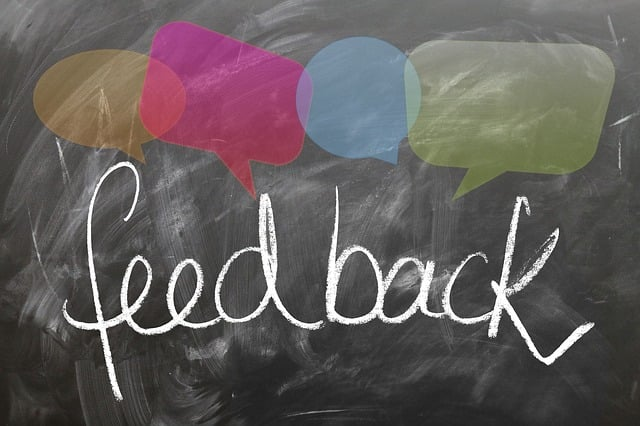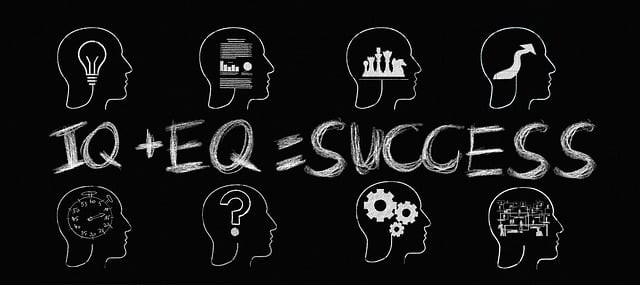
8 Strategies to Communicate Effectively in the Workplace

Imagine a workplace where everyone can communicate effectively, misunderstandings are rare, and productivity soars. Sounds ideal, right? The ability to communicate effectively plays a crucial role in fostering a positive work environment, enhancing collaboration, and driving success. In this blog post, we’ll explore various strategies to improve workplace communication, overcome barriers, and ensure understanding and clarity among team leaders and members.
Short Summary
Understand the basics of effective communication and its importance in the workplace.
Develop good communication skills to ensure successful workplace communication, such as active listening and emotional intelligence.
Promote a positive environment by building trust, encouraging employee participation, and recognizing/rewarding good communication.
Understanding the Basics of Effective Communication

Effective communication is the foundation upon which successful organizations are built. It involves exchanging information between a team member or members, both inside and outside the organization, to ensure clarity of understanding. Enhancing communication skills can significantly improve organizational practices and minimize errors.
In this section, we will discuss the importance of effective communication and the different types of communication.
Importance of Effective Communication
Effective communication is a vital aspect of teamwork, collaboration, and productivity. It helps to avoid misunderstandings and confusion, ensuring that everyone is on the same page and working towards common goals. Furthermore, clear and concise communication is essential for respecting everyone’s time and ensuring the point is conveyed effectively.
In addition, effective internal business communication is crucial for employee productivity, as it enhances job performance and reduces the time spent searching for information. In short, effective communication is essential for success in the workplace.
Types of Communication
Communication takes various forms in a typical organization – verbal, nonverbal, written, and visual. Effective verbal communication involves speaking confidently and actively listening, while nonverbal communication includes body language, facial expressions, and tone of voice.
Written communication is essential for maintaining records of decisions and actions taken, while visual communication helps convey complex information using images, charts, or diagrams. By understanding and employing appropriate communication methods, organizations can ensure that their messages are clear and comprehensible, reducing the chances of miscommunication.
Developing Good Communication Skills

Developing good communication skills is key to ensuring understanding and clarity in the workplace. As employees with proficient listening skills tend to be more productive, it’s important to focus on enhancing communication skills such as active listening, emotional intelligence, and clear messaging.
In this section, we’ll explore these skills and discuss how they contribute to effective workplace communication.
Active Listening To Communicate Effectively
Active listening is a crucial element of effective communication, as it allows individuals to attentively focus on what is being communicated, ask questions, and use nonverbal cues to demonstrate engagement. By practicing active listening techniques, employees can better understand the message being conveyed and respond appropriately, leading to improved collaboration and productivity.
So, the next time you engage in a conversation or attend a meeting, remember to practice active listening to ensure that you fully comprehend the information being shared.
Emotional Intelligence
Emotional intelligence is the ability to understand and manage one’s own emotions, as well as the emotions of others. It plays a crucial role in effective communication, as it enables individuals to emotionally connect with others and respond empathetically.
By recognizing and understanding emotions through observing body language, facial expressions, and tone of voice, we can better comprehend the feelings of others and manage our own emotions accordingly. Developing emotional intelligence is key to fostering strong relationships, positive encounters, and a positive work environment.
Clear and Concise Messaging
Clear and concise messaging is essential for preventing misunderstandings and confusion in the workplace. By using simple language and avoiding technical jargon, we can ensure our messages are easily understood by our colleagues.
Additionally, clarity is crucial for ensuring the purpose of the message is understood without the need for assumptions. So, when communicating with others, strive for clarity and conciseness to avoid miscommunication and enhance overall workplace efficiency.
Overcoming Communication Barriers

In today’s diverse and globally connected workplace, it’s crucial to recognize and address communication barriers such as cultural differences, language barriers, and technological challenges. By overcoming these barriers, we can foster a more inclusive and productive work environment.
In this section, we’ll explore each of these barriers and provide strategies for overcoming them.
Cultural Differences
Cultural differences in the workplace can arise from various factors such as generational, ethnic, religious, and educational backgrounds. These differences can impact communication styles, attitudes toward organizational hierarchy, and work-life balance, potentially leading to misunderstandings and misinterpretations.
To address these challenges, it’s essential to recognize and respect cultural distinctions while being open to learning and adapting to different communication styles. By fostering an inclusive and culturally sensitive work environment, organizations can bridge cultural gaps and enhance overall communication.
Language Barriers
Language barriers can arise due to differences in native languages, accents, technical jargon, and levels of literacy, potentially leading to communication difficulties and misunderstandings. To bridge language barriers, it’s important to use straightforward language and avoid technical terminology or colloquialisms.
Additionally, recognizing and respecting language differences and fostering a supportive environment where employees can seek clarification can help in overcoming language barriers and enhancing communication.
Technological Challenges
Technological challenges in workplace communication can stem from antiquated software, inadequate training, and cybersecurity threats. Addressing these challenges is crucial for seamless communication and collaboration among team members.
By investing in up-to-date software solutions, providing adequate training, and implementing robust cybersecurity measures, organizations can overcome technological barriers and maintain efficient and communication channels.
Utilizing Technology for Better Communication

As the workplace continues to evolve, technology plays an increasingly important role in enhancing communication, collaboration, and productivity. By leveraging collaboration tools, video conferencing solutions, social media platforms, and internal communication platforms, organizations can facilitate effective communication and overcome common communication barriers.
In this section, we’ll discuss various technologies that can aid in better workplace communication.
Collaboration Tools
Collaboration tools, such as project management software, video conferencing platforms, shared document editing tools, and team communication apps like Slack, Trello, and Asana, are instrumental in facilitating seamless communication among team members. By streamlining communication and centralizing information, these tools can help reduce misunderstandings and improve overall productivity.
Incorporating collaboration tools in the workplace ensures that employees have access to the information they need when they need it.
Video Conferencing Solutions
Video conferencing solutions, such as Zoom, Microsoft Teams, Google Meet, Webex by Cisco, and BlueJeans Virtual Meetings, enable employees in different locations to hold virtual meetings with a near-in-person experience. By connecting remote employees and teams and fostering real-time communication, these solutions not only facilitate collaboration but also help overcome geographical barriers and time zone differences, ensuring that everyone stays on the same page.
These solutions are becoming increasingly popular as businesses look for ways to stay connected and productive while working remotely. They provide a secure and reliable platform for virtual meetings, allowing teams to share documents, collaborate on projects, have group meetings, and even host virtual events. Additionally, they offer features such as video recording, screen sharing, and chat capabilities.
Internal Communication Platforms
Internal communication platforms, such as email, instant messaging tools, employee intranet software, and collaboration tools, play a crucial role in information sharing and effective communication within an organization. These platforms can help streamline communication, enhance collaboration, and expedite task completion while reducing the need for physical meetings.
By implementing and effectively using internal communication platforms, organizations can ensure that employees have access to the necessary information and resources required for their work.
Encouraging Open and Honest Feedback

Open and honest feedback is essential for personal and professional growth, as it helps individuals identify areas for improvement and reinforce positive behaviors.
In this section, we will discuss the importance of providing constructive feedback and creating an environment where employees feel comfortable in giving feedback and receiving feedback.
Constructive Feedback
Constructive feedback is a type of feedback that seeks to help the recipient improve by providing specific, actionable, and behavior-focused comments, advice, or suggestions. It is crucial for improving performance, behavior, and trust in the workplace and personal life.
By providing constructive feedback, managers and peers can help individuals identify areas that need attention and work together to devise plans to rectify any problems, ultimately contributing to a more positive and productive work environment.
Receiving Feedback
Receiving feedback is just as important as giving it. It helps individuals understand how others perceive them and provides an opportunity to improve performance, modify behaviors, and reinforce positive behavior.
When receiving feedback, it is essential to maintain an open-minded attitude and actively listen to what others have to say. Responding professionally and expressing gratitude for the input can help strengthen relationships and ensure continuous growth and development.
Promoting a Positive Communication Environment

A positive communication environment is crucial for fostering trust, enhancing collaboration and customer satisfaction, and improving morale and motivation among employees. In this section, we’ll discuss strategies for promoting a positive communication environment, including building trust, encouraging employee participation, and recognizing and rewarding good communication.
Building Trust
Building trust is integral to establishing and maintaining strong working relationships, promoting effective communication, and fostering innovation and creativity in the workplace. Trust can be fostered through honest and transparent communication, setting clear expectations, and demonstrating respect for colleagues.
By cultivating an atmosphere of trust, organizations can enhance overall communication and collaboration, leading to improved morale and motivation among employees.
Encouraging Employee Participation
Encouraging employee participation in the workplace can result in increased engagement, motivation, and collaboration among team members. By offering opportunities for employees to voice their thoughts and perspectives, organizations can create a collaborative work atmosphere where everyone feels valued and heard.
This, in turn, can lead to improved problem-solving, decision-making, and overall performance.
Recognizing and Rewarding Good Communication

Recognizing and rewarding good communication in the workplace can lead to increased morale, engagement, productivity, and satisfaction among employees. By acknowledging effective communication and creating an environment where employees feel comfortable voicing their opinions, organizations can foster trust, respect, and a more positive work environment.
This not only enhances overall communication but also contributes to the long-term success of the entire organization.
Summary
In conclusion, effective communication is essential for fostering a positive work environment, enhancing collaboration, and driving success. By understanding the basics of effective communication, developing good communication skills, becoming effective communicators, overcoming communication barriers, and utilizing technology, organizations can create an environment that promotes open and honest feedback, trust, and employee participation. As we’ve explored in this blog post, investing in effective communication strategies can lead to a more engaged, motivated, and productive workforce, ultimately driving organizational success. So, take the first step towards better communication and embrace these strategies to transform your workplace today.
Frequently Asked Questions
What is communicating effectively?
By using clear language and staying attuned to the needs of the other party, successful and effective communication skill, can be achieved.
What are effective communication examples?
By following these guidelines, you can foster better communication and connections with those around you.
What are the 4 types of business communication?
Ultimately, effective communication is key to maintaining a successful business.
What are the 7 Cs of business communication?
Good communication is essential for any business to succeed.
By following the 7 C’s, you can ensure that your message is clear, concise, complete, correct, coherent, considerate, and concrete. This will help ensure that your communication is effective.
What are the 5 components of business communication?
Good communication is essential for any business to succeed. It helps to ensure that everyone is on the same page and that all stakeholders are aware of the company’s goals and objectives.




Leave a Reply